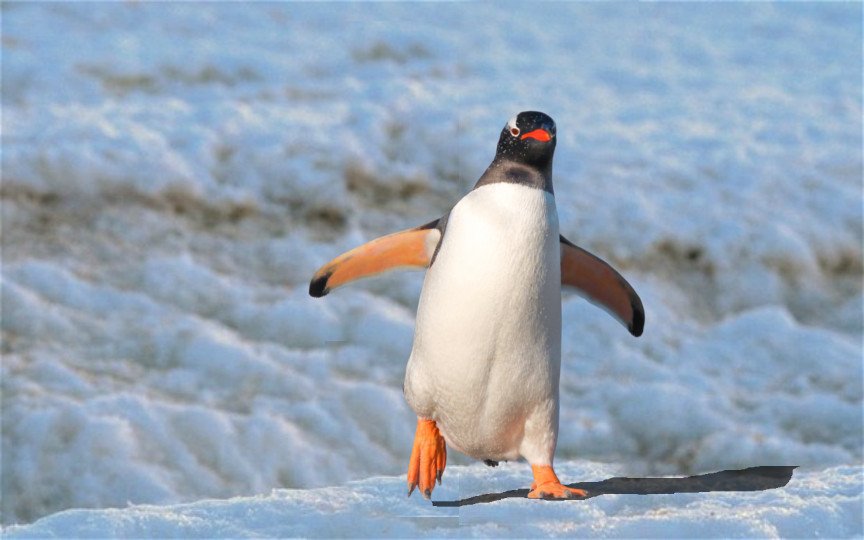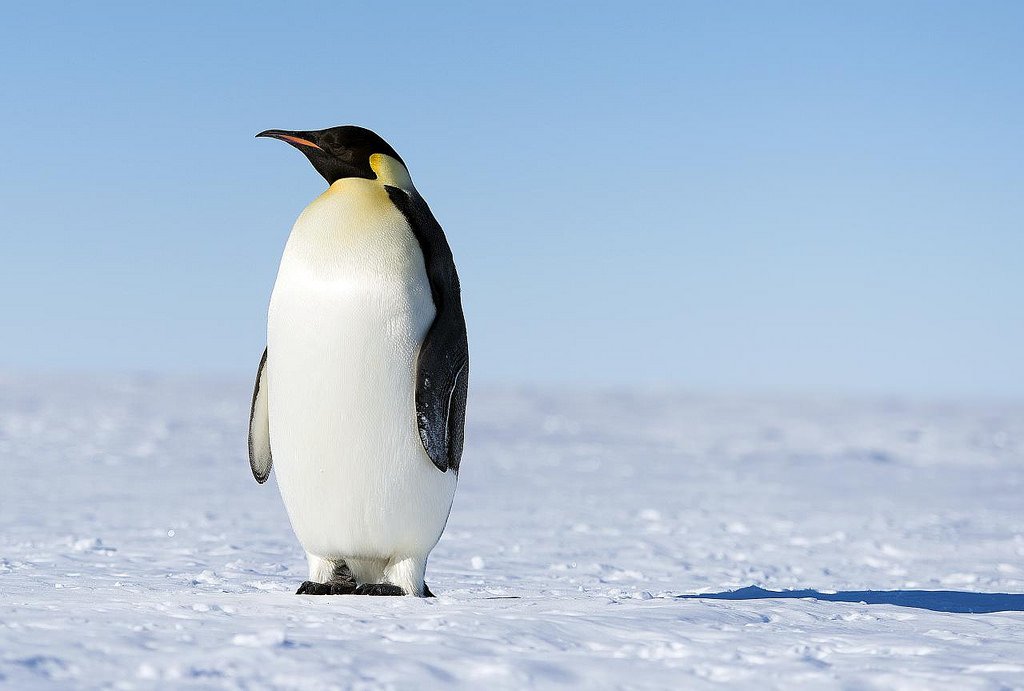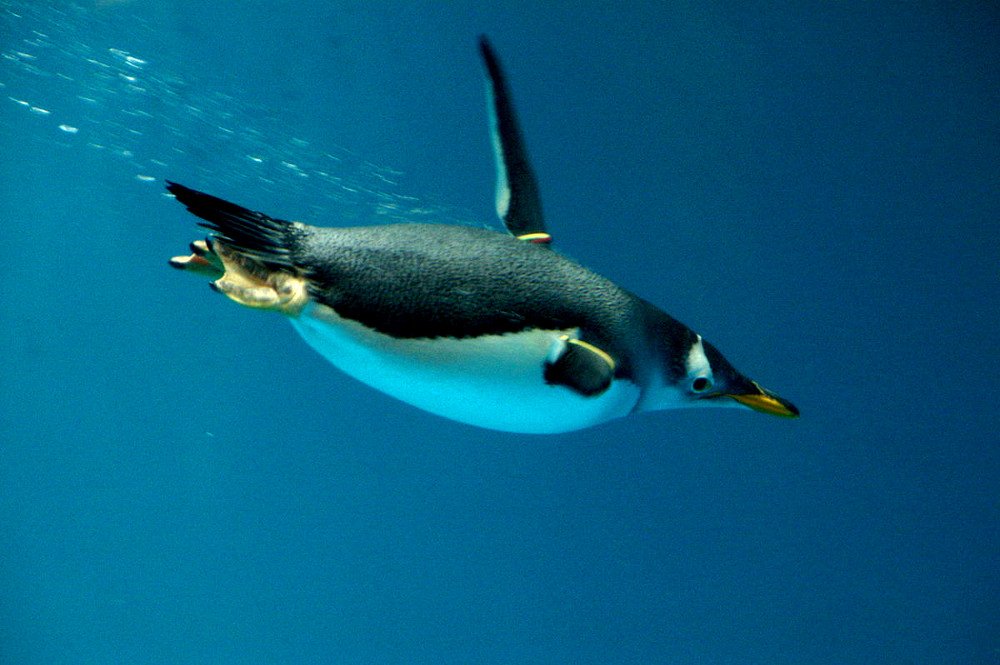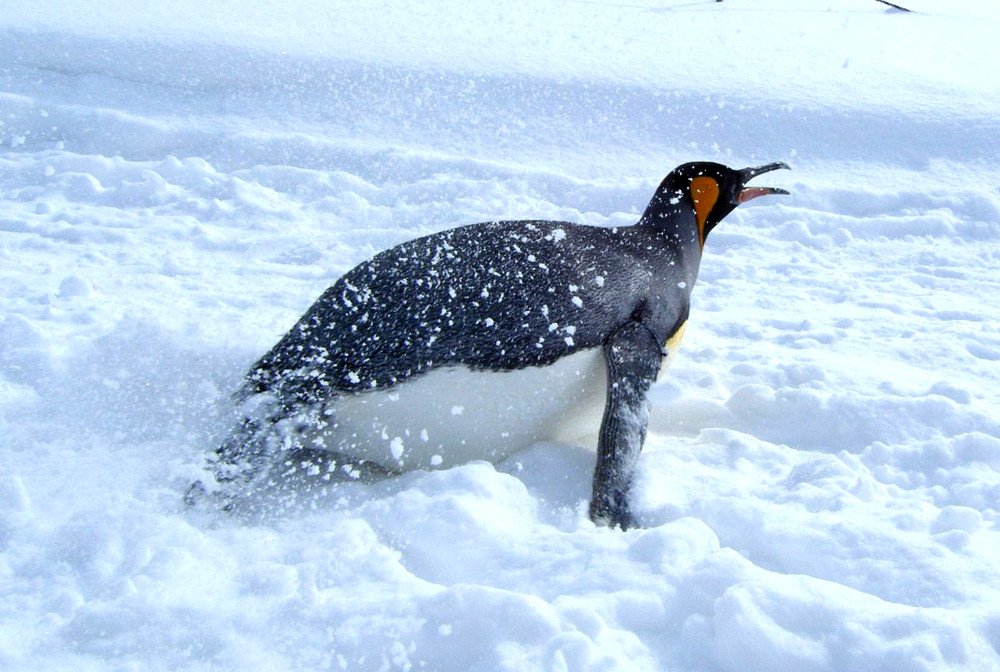Table of Contents (click to expand)
Yes, penguins do have knees. The structural configuration of the knees of a penguin is based on the same structure of bones that give form to a human leg. A penguin’s leg has a short femur, knee, tibia and fibula. The reason why their legs appear to be short and sturdy is that a large portion of their upper leg is obscured by dense feathers.
Other than their black-and-white feathers that uncannily resembles a tuxedo, what is the one characteristic that we typically associate with a penguin? Their gait, of course!
If you were to board a ship and set off on a trip to visit the deep Southern Hemisphere, you’d dock at the edges of freezing islands of white snow under the equally white sun and witness a plethora of stout birds waddling together, their flippers on both sides, pendulating up and down, marching towards the pearl-blue water.

Looking at a waddling penguin, it is perfectly logical to assume that they don’t have knees. Their gait is analogous to a human walking with crutches, with his legs erect, locomoting by successively lifting and stomping ahead, one leg after another, without bending a knee. This provides the impression of an absence of knees. The gait is then perceived to be a sort of waddle.
However, this is far from the truth. Penguins do have knees. In fact, the bone structure is indistinguishable from the bone structure of a human knee!
A Penguin’s Knees
The structural configuration of the knees of a penguin is based on the same structure of bones that give form to a human leg. A penguin’s leg has a short femur, knee, tibia and fibula. The reason why their legs appear to be short and sturdy is that a large portion of their upper leg is obscured by dense feathers.

One can easily detect their bent knees in an X-ray scan of their lower body.
So, if they have a well-functioning pair of knees, the obvious question then arises — why do they persist to waddle?
Also Read: Why Do Flamingos Stand On One Leg?
Why Do Penguins Waddle?
Penguins are one of 40 species of flightless birds, a list that includes kiwis and emus. They can weigh between 90 and 2.5 pounds and stand between 45 and 10 inches. Penguins are known to spend 75% of their time in the water. The remaining 25% is spent on ice or land for procreation. They are highly adapted to water and their bone structure causes them to be exceptional swimmers.
Because of this preference for water, their morphology has assumed a structure that seems to represent a compromise between aquatic and terrestrial locomotion. Both energy utilization and velocity suffer when a penguin moves on land.

The expenditure of energy spent on walking is relatively higher for penguins than for other birds of equivalent body mass and stature. An estimate reveals that it is around two times more than other birds expend. Therefore, waddling is the most efficient way to walk on land or ice.
Their bone structure pattern renders them excellent swimmers who can effortlessly cleave water and swim swiftly, as if “flying” through it.

One theory also claims that their petite legs aid with incubation, because they greatly diminish the loss of heat. This is pivotal when we recall that they lay eggs in the freezing winters of Antarctica. This illustrates an ingenious evolutionary trade-off.
Other than placing them under an X-ray machine to detect their concealed knees, one can discern the presence of their knees by observing them sliding on ice. The force to accelerate further ahead can only be generated by bending their knee and pushing against the surface beneath.

So, despite the relentless driving force of natural selection and the meticulousness that goes into giving form to these intricacies, despite the thoughtful preservation of favorable features and the gradual transmutation of the otherwise unfavorable features into favorable ones — a process that takes millions of years — we only admire and adore these exemplary creatures for their plump figure, goofy rocking movements and waddling gait.
But who wouldn’t? There’s no denying that they’re adorable!
Also Read: Why Do Penguins Huddle Together?
How well do you understand the article above!

References (click to expand)
- Pinshow, B., Fedak, M. A., & Schmidt-Nielsen, K. (1977, February 11). Terrestrial Locomotion in Penguins: It Costs More to Waddle. Science. American Association for the Advancement of Science (AAAS).
- FAQ: Do penguins have knees?. The New England Aquarium
- Do Penguins Have Knees? - New England Aquarium. The New England Aquarium
